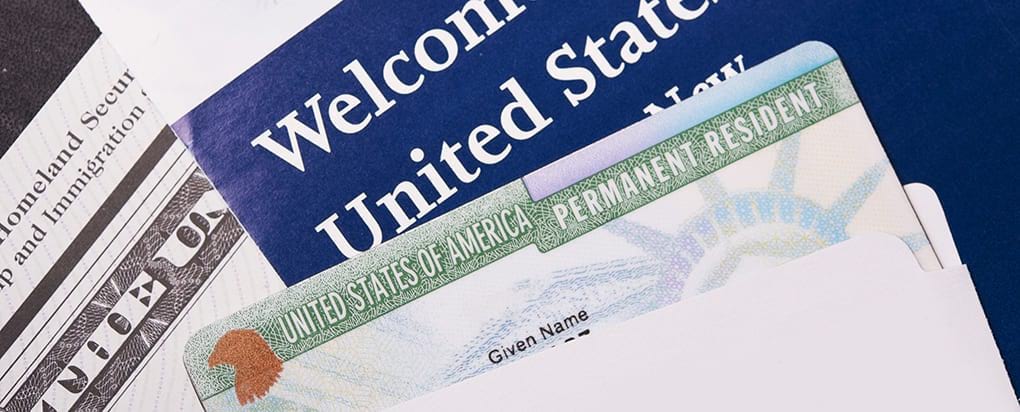
How long to wait for Green Card
applying for EB-1, EB-2, or EB-3 visas?
Immigrants who have submitted their Form I-140, Immigrant Petition for Alien Worker, or prospective immigrants who are considering applying for EB-1, EB-2, or EB-3 visas may all ask the same question: “How long will it take before I can get my Green Card?”
This article will answer this question and help to put your mind at ease.
Your waiting time has three major components:
Processing Time for I-140
- The time the U.S. Citizenship and Immigration Services (USCIS) will need to process your visa application.
- At the end of this period, you will receive the immigration status or visa you applied for if your case is approved.
Queue Time
- The time you must wait before applying for a Green Card by filing an I-485 Application to Register Permanent Residence or Adjust Status (AOS) form.
- At the end of this period, you will be allowed to apply for a Green Card.
Processing Time for AOS
- The time the USCIS will need to process your Green Card application.
- At the end of this period, you will get a Green Card if your case is approved.
The total time it takes for these three sequential components to transpire is the total Green Card processing time to obtain a Green Card once an I-140 has been submitted.
I-140 Processing Time
The USCIS’s processing time for I-140 petitions varies depending on the category of the immigration petition and the workload of the service center processing the case. The USCIS has five service centers. Only two of them accept I-140 petitions: the Nebraska Service Center and the Texas Service Center. Even within the same service center, individual processing times may vary. To get a reasonable estimate of the processing time for your specific case, check the USCIS website at website USCIS.
In some cases, the USCIS may not be able to directly approve or deny the case but will issue a Request for Evidence (RFE), asking the petitioner for additional documentation. An RFE will indicate a deadline for response. Generally, it will not exceed 12 weeks. If you submit the requested evidence before the deadline, the USCIS will proceed with your case in a timely manner. However, the issuance of an RFE will extend the overall processing time of your case.
You may expedite the processing time by requesting the Premium Processing Service (PPS) if the PPS is available for your case. If you request Premium Processing, the USCIS will process your case within 15 calendar days – much faster than regular processing times. Keep in mind that the Premium Processing is not available for all categories using Form I-140, and the USCIS may suspend the availability of the PPS at any time. You may want to discuss the details of requesting the PPS with your attorney.
Queue Time

Only a specific number of spaces are available for certain categories of immigration each year. When the quantity of applications submitted exceeds the number available, new applicants must wait for the next available space to submit their applications. Until then, the USCIS will not review petitions in those categories, even for fully qualified applicants.
In order to know how long you may have to wait during the queue time, you must understand the priority date. It is simply the date when the USCIS receives your case.
 |
If your case requires a labor certification from the Department of Labor (DOL), your priority date will be the day your labor certification application is accepted for processing by DOL. |
 |
If your case does not require a labor certification, your priority date will be the day the USCIS receives your Form I-140. |
You need also know the cut-off date for your category of immigration. The United States Department of State (USDOS) publishes a monthly visa bulletin which lists the cut-off dates of immigration categories and different countries of birth. You can check the most recently visa bulletin at the USDOS’s website
Check those two dates. If the cut-off date shows “C”, it means “current.” You may file your AOS application once you are ready. If it shows “U”, it means “unauthorized.” You may want to check with your attorney if this is the case. If the cut-off date is the same day or later than your priority date, you can submit your AOS application. The cut-off date will move forward as time goes by, but it may also remain the same for a long period of time. It can even more backward. There is no way to accurately predict how fast it will move or when will it meet your priority date.
Please be aware that the cut-off date varies depending on the country of birth, not the country of citizenship. You cannot manipulate your case’s cut-off date by obtaining citizenship in another country. Basically, you were stuck in one column the day you were born.
Adjustment of Status Processing Time

The processing time for an AOS varies depending on the office processing the case. Even within the same office, the time may vary dramatically from 11 months to 46.5 months, depending on a variety of circumstances that are beyond your control. The USCIS may issue an RFE as well. The processing time for an RFE may not be expedited by a PPS because the PPS does not apply to AOS applications. The best way to know the time is still to check the USCIS website at.
The overall Green Card waiting time for the entire process varies from case to case. In fact, it can vary widely. Just because you know someone for whom the process went quickly, that does not mean that yours will. On the other hand, just because you know someone whose process was lengthy, that does not mean that you will. The best things to do are to plan wisely, wait patiently, and use a qualified Immigration Attorney throughout the entire process.
Disclaimer: The article contains general information and does not include legal advice on a particular case.
















